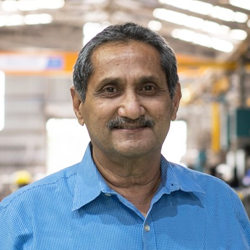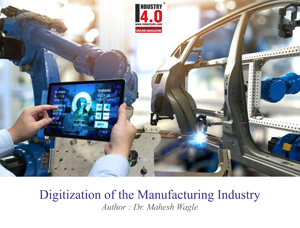How ‘Concurrent Engineering’ can Transform Product Development, Reduce Time-To-Market at Manufacturing Firms ?
For manufacturing firms, bringing down the ‘Time-To-Market’ window – calculated from the moment of a new product’s conception in the Research and Development (R&D) laboratories to its release in the market – is one of the not-too-many certain ways of maximising their profits.
By getting its product to the market much faster, a firm gains a decisive edge. However, it is the product’s superior quality and distinctive features that will enable the firm to consolidate this advantage. It could be a leading manufacturer of niche electronic equipment, or a mass-producer of automobiles, shortcomings in their products is brought home to the companies, often belatedly, and mostly through customer feedback. Achieving this balance – expediting production on the one hand, while constantly endeavouring to improve the product on the other – calls for the adoption of innovative, and far-seeing, operational models that can better streamline the various composite processes that make up the product development cycle. ‘Concurrent Engineering’ is a particularly promising model capable of transforming production practices at manufacturing firms. Concurrent Engineering enables firms to design and build manufacturing lines when innovative ideas for new products are still being incubated in the R&D laboratories. The shop line thus assembled could prove to be an optimal set-up for the mass-manufacture of a new product, achieving high levels of efficiency and productivity.
Not with standing the mounting costs and resources necessary to stay at the forefront of innovation – in 2019, industries the world over expended USD 2.3 trillion on innovation research, roughly 2% of the global gross domestic product (GDP) – firms are determinedly increasing their investment in engineering, and R&D. Between 2022, and ’26, investment in R&D is likely to witness a compound annual growth of 10% every succeeding year. With competition in markets, across sectors and industries, getting more aggressive, companies have realised that they can ill-afford to take their foot off the innovation pedal. However, companies also need to adopt practices that bridge the gap between the R&D laboratories and the engineering sections to ensure that their production models remain economically viable.
Staying on the same page with engineering
Many a brilliant concept or solution conceived by the innovative minds at work in the R&D laboratories often add little to their respective companies’ product portfolio or revenue. Business experts attribute this failure to turn innovative concepts into actionable insights to the relative isolation that the R&D wing of firms tend to operate in. Often, they remain secluded even from fellow engineers entrusted with the task of ensuring that these ideas can be successfully manufactured on scale.
Assembling the manufacturing line to ensure precision in the manufacture of any new product is a task to be undertaken most scrupulously. Among the reasons that results in prolonging the ‘Time-To-Market’ window is the time it takes for the engineering team to put in place the manufacturing line for a new product. The ‘Concurrent Engineering’ model allows for the engineering team to start assembling the manufacturing line when research on a new product is still under way. Consequently, this enables the engineering team to foresee, and subsequently pre-empt any problems that could later stall the manufacturing process. On the other hand, these problems, when relayed to the R&D personnel, can enable them to tweak or remodel the design of a new product to avert such an eventuality.
For instance, the innovative minds in the R&D laboratory of a firm engaged in the manufacture of battery for electric vehicles, could make a breakthrough for a revolutionary new battery. However, for the firm to be able to maximise the advantage that such a path-breaking innovation is bound to lend it in the market, it will have to make a concerted effort to reduce ‘Time-To-Market’, while preventing manufacturing costs from being overrun by overheads. The R&D team, by working in concert with the engineering team, can successfully design a manufacturing line tailored for the new product. In the case of the electric vehicle battery, this involves factoring a diverse set of parameters, ranging from packaging, stability of chemicals, among others. Thus, firms that adopt the ‘Concurrent Engineering’ model can ensure that the shop line for any new product is already in place before commencing manufacture, effectively reducing ‘Time-To-Market’ window by months together.
Encouraging a culture that enables cohesion in its operational framework, firms can ensure that the R&D wing’s energies are directed to meet the demands and requirements of the market. In the long haul, ‘Concurrent Engineering’ could, by dint of the close collaboration that it mandates between R&D, and engineering departments, enable the development of flexible, and reusable manufacture lines. This would enable companies to more accurately chalk-out long-term plans, while bringing down the quantity of industrial waste, and increasing profits.
A digitised development cycle
The notion of tweaking or improving the design of a new product well after the production process has commenced may suggest an incoherent managerial approach only if one were to consider the more traditional ‘Sequential Engineering’ or ‘Over-The-Wall’ approach to manufacturing, and their attendant constraints. As the name suggests, ‘Over-The-Wall’ manufacturing entails a modular approach to production development wherein each department is assigned a specific function, on the completion of which, the succeeding department takes over production. However, a digitised ecosystem would effectively ensure that the various disparate functional wings that contribute to the manufacturing process do not work in silos, allowing for dissemination of new ideas, or suggested improvements, in real-time.
Leveraging the full-fledged capabilities of the ‘Digital Twin’ technology can enable manufacturing firms to successfully incorporate changes to product design even at later stages of development. If the R&D department is provided the ‘Digital Twin’ blueprint of the firm’s existing manufacturing set-up, the researchers will be better placed to orient their design to its capabilities, or, in the case of ground-breaking ideas, use the same virtual tool to illustrate their technological requirements to get production off the ground. Consequently, this would provide both the management, and the engineering to assess, at the very outset to conduct a comprehensive feasibility study of undertaking mass production of the proposed product. At the other end of the operational spectrum, by sharing the ‘Digital Twin’ of the proposed design with the engineering section, researchers would ensure that the former had prior knowledge of the requirements, and afford them the time needed to tailor the shop line accordingly. Supplemented by advanced communication tools such as ‘Digital Thread’, manufacturing firms can ensure that the innovative strengths of ‘Digital Twin’ are wholly harnessed. By using both these technologies in conjunction with the other, incorporation of changes to the product will also be rendered easier, since researchers can suggest, represent, changes, and run simulations on these virtual tools, and almost instantly receive feedback from the engineering department on the possibility of accommodating the same.
Impact on firms’ bottom-line
Given that 45% of companies, on average, fail to meet the scheduled launch date, resulting in their incurring huge losses, the impact of transformative product development models cannot be overstated sufficiently. Reduction in the ‘Time-To-Market’ window greatly improves the chances of the firm cornering a lion’s share of the targeted market, and boost profitability. As vital as meeting the deadline for the scheduled launch date is for manufacturing firms – losses incurred through deferral in the launch of products far outstrips the costs involved in accelerating their production – it is no less, if not more, important that the products meet the highest standards of quality expected by the customer. Adoption of ‘Concurrent Engineering’ model to manufacturing would also revolutionise a firm’s approach to innovation, by introducing new metrics to measure the success of the R&D department beyond the number of patents filed, and tying it with the fortunes of the company itself.
About the author:

Dr. Mahesh Wagle
Co-Founder & Director
Cybernetik
Mahesh Wagle is a Co-Founder & Director of Cybernetik – an industrial automation company that has been undertaking the designing, building, and end-to-end installation of turnkey automation systems for the Food, Agro, Pharmaceutical, and Chemical industries for over three decades.
Mahesh’s passion for engineering and vision for the future of automation systems enabled him to co-found Cybernetik Technologies in 1989, a period when the automation market in India was still at a fledgling stage. As a technical specialist, he was among the major minds behind the development of several path breaking processes and innovations.
With Mahesh being one of the major driving forces behind Cybernetik’s quest for innovation, the organization continues to broaden globally, with three international offices in Vietnam (for Southeast Asia), Dubai (for Middle East and Africa) and United States (for North America). It has four factory units and 2 design offices in India, with over 380 employees.
Prior to founding Cybernetik, Mahesh held leadership roles in Keller Technology Corporation, Tonawanda, NY and Buffalo Design Research Pvt. Ltd., Pune. He is an alumnus of the prestigious Indian Institute of Technology (IIT)-Madras, and the University of Buffalo in New York.
Cybernetik can be contacted at:
Cybernetik’s social media links
FaceBook | YouTube | Instagram | LinkedIn
Also read Dr. Mahesh Wagle‘s earlier article:











